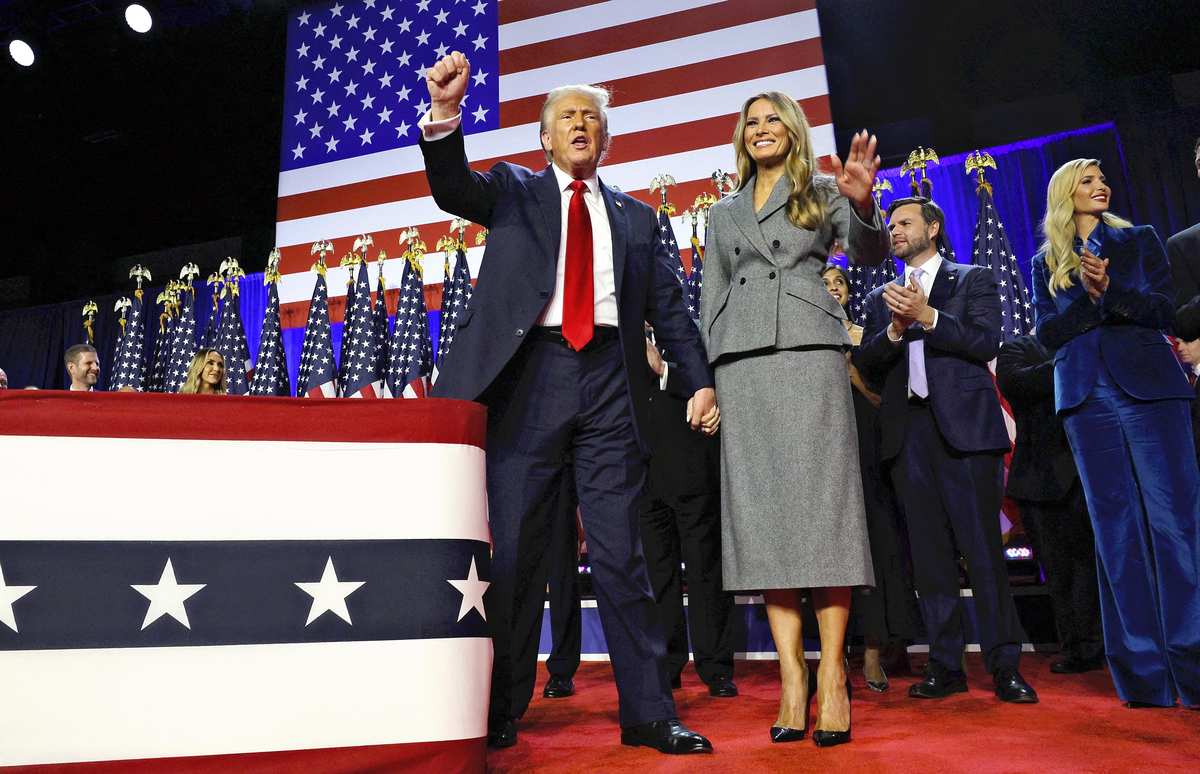
Donald Trump’s reelection as U.S. president topped the list of international news events for 2024 as selected by Yomiuri Shimbun readers.
Next in the rankings was the assassination attempt during Trump’s presidential election campaign in which his right ear was wounded, followed by the fraud case against Major League Baseball star Shohei Ohtani’s interpreter Ippei Mizuhara, who stole money from a bank account belonging to the player.
A total of 21,249 votes were received during the polling period from Nov. 26 to Dec. 12, of which 19,722 were valid. Of that number, 14,628 were submitted online. There were two voters whose choices perfectly matched the overall top 10 results.
***
1. Trump gets reelected
Republican Donald Trump defeated Democrat and U.S. Vice President Kamala Harris in the Nov. 5 U.S. presidential election. The 2017 to 2021 former U.S. president will assume office again on Jan. 20, 2025. He will be the second person in 132 years to serve two non-consecutive terms as U.S. president.
Trump overwhelmed his Republican rivals in the presidential primaries, where candidates are nominated for president. The primary began in January 2024, and he secured his nomination in March.
While the presidential election had been expected to be a battle between President Joe Biden and Trump, Biden’s poor televised presidential debate performance in June led him to withdraw from the race.
Harris was nominated to replace Biden. Harris, a descendant of immigrants whose father is from Jamaica and whose mother is from India, aimed to be the United States’ first female president.
In the race, Trump sharply criticized inflation and undocumented immigration under the Biden administration, gaining support from some Black and Latino voters who traditionally support the Democratic Party.
Republicans won the majority in the Senate and maintained it in the House in the federal congressional election held concurrently with the presidential election.
2. Trump shot during rally speech
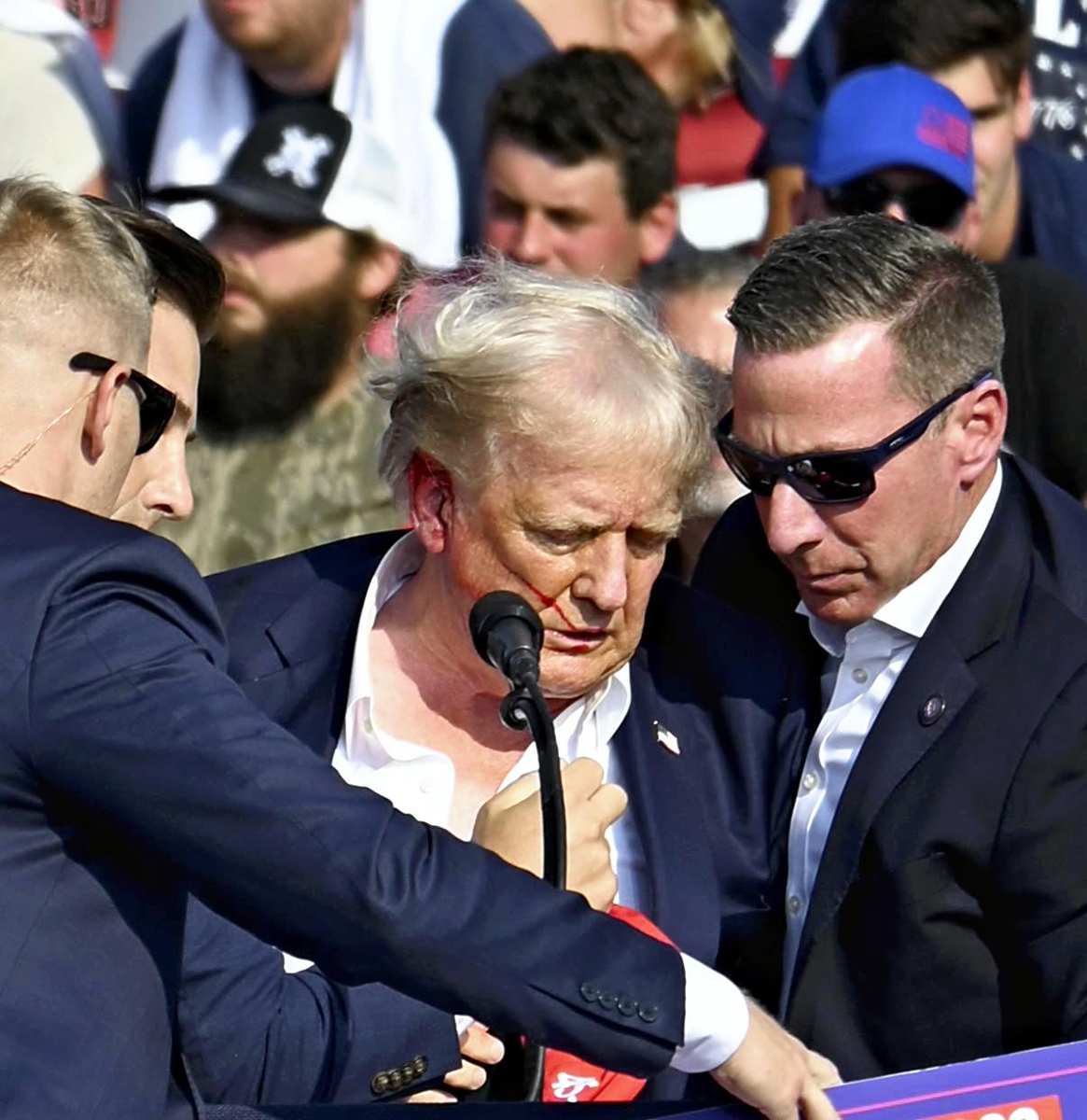
On July 13, former Republican U.S. President Donald Trump was shot during a speech at a rally in the U.S. state of Pennsylvania. The bullet pierced the upper part of his right ear, but the wound was not life-threatening.
Trump crouched down but got to his feet with the help of Secret Service agents. Then, he continuously pumped his fist into the air and cried to his supporters, “Fight!”
Trump made an appearance at the Republican National Convention two days after the assassination attempt.
One man in the rally audience was killed in the attack and two others seriously injured. A Secret Service sniper killed 20-year-old Thomas Matthew Crooks, who opened fire at Trump with a deadly semi-automatic rifle from a building rooftop about 140 meters away from the stage. His motives remain unknown.
The director of the U.S. Secret Service resigned over failing to prevent the incident. Another assassination attempt on Trump occurred at a Florida golf course in September, and a man who fled the scene was later captured.
3. Ohtani’s interpreter Mizuhara fired
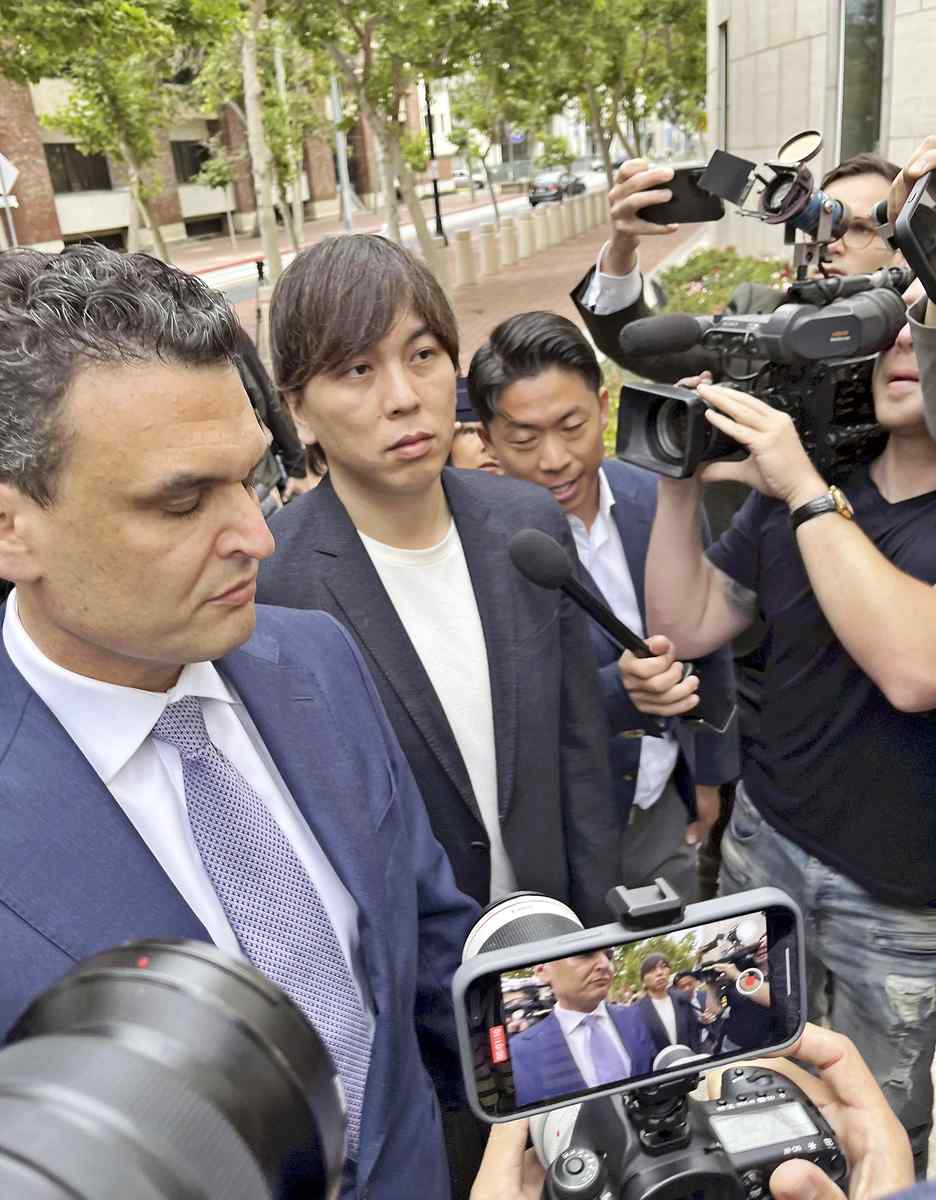
Ippei Mizuhara, center, arrives at federal court in Santa Ana, Calif., on June 4.
The Los Angeles Dodgers announced on March 20 that they had fired star Shohei Ohtani’s interpreter Ippei Mizuhara. Later in April, U.S. federal prosecutors charged Mizuhara with bank fraud and other crimes for defrauding the Major League Baseball player to pay off debts Mizuhara had incurred through illegal sports gambling.
Beginning in 2021, when Ohtani was a member of the Los Angeles Angels, Mizuhara allegedly wired money from Ohtani’s account to a bookmaker without the two-way star’s knowledge, and also purchased baseball cards to resell them. The total damage to Ohtani amounted to $16,975,010 (approximately ¥2.6 billion).
Mizuhara pleaded guilty in federal court in Santa Ana, Calif., in June 2024. He will be sentenced next January.
4. Japanese schoolboy stabbed to death in China
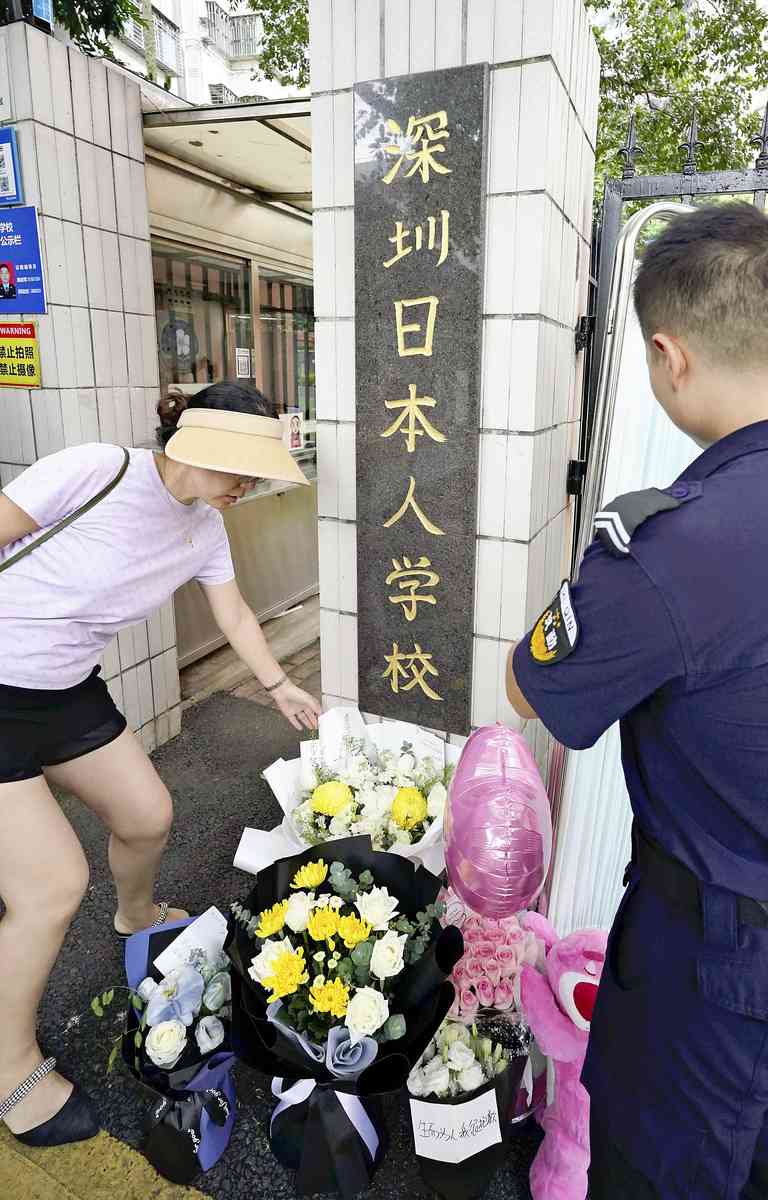
A Chinese woman offers flowers at Shenzhen Japanese School in China on Sept. 20.
A boy walking to a Japanese school in Shenzhen, Guangdong Province, was stabbed by a 44-year-old Chinese man on Sept. 18. The 10-year-old Japanese boy died early the next day. The incident sent shockwaves through the local Japanese community, which consists of approximately 100,000 people.
The Chinese side has repeatedly said it was an “isolated incident” and has not explained the man’s motive.
Lying behind the incident was growing nationalism and the spread of anti-Japanese postings on social media, among other reasons, it has been said. The crime occurred on the 93rd anniversary of the Liutiaohu Incident that occurred in 1931 and triggered the Manchurian Incident.
After the stabbing, Japanese schools in various parts of China heightened their security, even taking such measures as placing security guards on school buses.
A Chinese woman was killed in June 2024 in Suzhou, Jiangsu Province, when a man attacked a Japanese mother and her child standing near the woman while the two were waiting for a school bus.
5. M-7.7 earthquake hits Taiwan
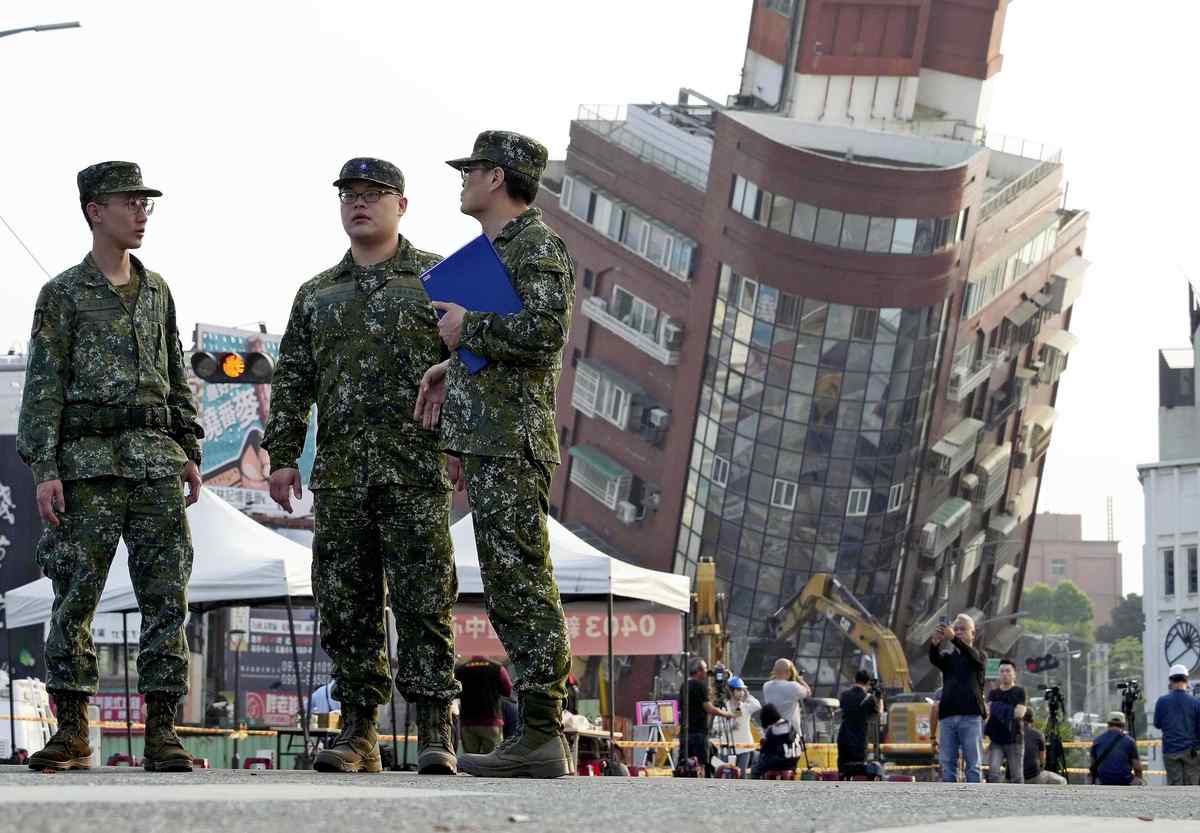
Military personnel stand guard near a tilted building in central Hualien, eastern Taiwan, on April 4.
A massive earthquake centered off the coast of Hualien County in eastern Taiwan struck on the morning of April 3, with a maximum intensity of upper 6 registered in Hualien, upper 5 in Yilan County, and lower 5 in Taipei City.
According to Japan’s Meteorological Agency, the epicenter was approximately 20 kilometers deep, with the magnitude of the quake estimated at 7.7.
In central Hualien, several buildings tilted greatly while a large-scale collapse occurred near the trails of the Taroko Gorge in Hualien, a famous tourist spot. Japanese and other tourists were temporarily stranded in the gorge.
The quake killed 18 people, and two foreign nationals went missing. More than 1,150 people were injured.
6. N. Korean troops fight in Ukraine war
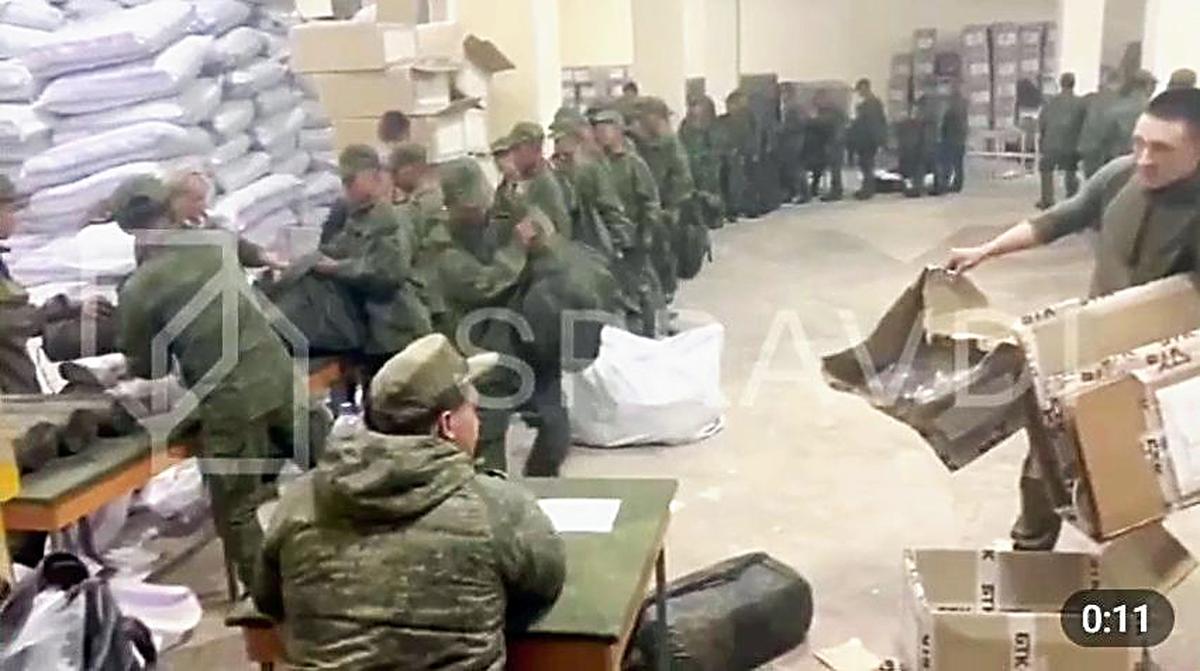
A video clip believed to show North Korean soldiers receiving equipment at a training site in the Russian Far East. (The letters in the center of this photo are the name of the Ukrainian authorities that released the image on Oct. 18.)
The U.S. and Ukrainian governments confirmed in October that North Korea had sent reinforcements to the Russian forces fighting against Ukraine.
After training in Russia, more than 10,000 North Korean troops were sent to the Kursk region in western Russia, where Ukrainian troops are conducting cross-border attacks. This is the first time that a third country’s troops have participated in Russia’s aggression.
Ukrainian President Volodymyr Zelenskyy announced on Nov. 5 that Ukrainian troops had engaged in battle against North Korean troops for the first time.
North Korean troops have reportedly suffered heavy casualties fighting Ukrainian forces. North Korean forces appear to be aiming to gain experience in modern warfare.
According to a high-ranking official of the South Korean government, Russia had provided North Korea with anti-air missiles and other supplies by November. This is believed to be in recompense for Pyongyang’s sending reinforcements.
7. One year since Gaza war began

Palestinians gather at buildings attacked by Israeli forces in Jabalia, northern Gaza, on Nov. 10.
Oct. 7 marked one year since the start of the current fighting in Gaza, which began with a surprise attack on southern Israel by Hamas, the Palestinian Islamist group that controls the Gaza Strip, and has yet to end.
Israeli Prime Minister Benjamin Netanyahu said the war against Hamas in Gaza will continue in order for Israel to realize its goals of eliminating Hamas and securing the release of all hostages. But Hamas’ sporadic resistance continues. Dozens of hostages still remain in captivity.
More than 44,000 people have been killed and over 100,000 people have been injured in Gaza as of Dec. 16.
With Israel blockading Gaza, food and water has been in short supply, causing an unprecedented humanitarian crisis.
8. Vladimir Putin secures 5th term as Russian president
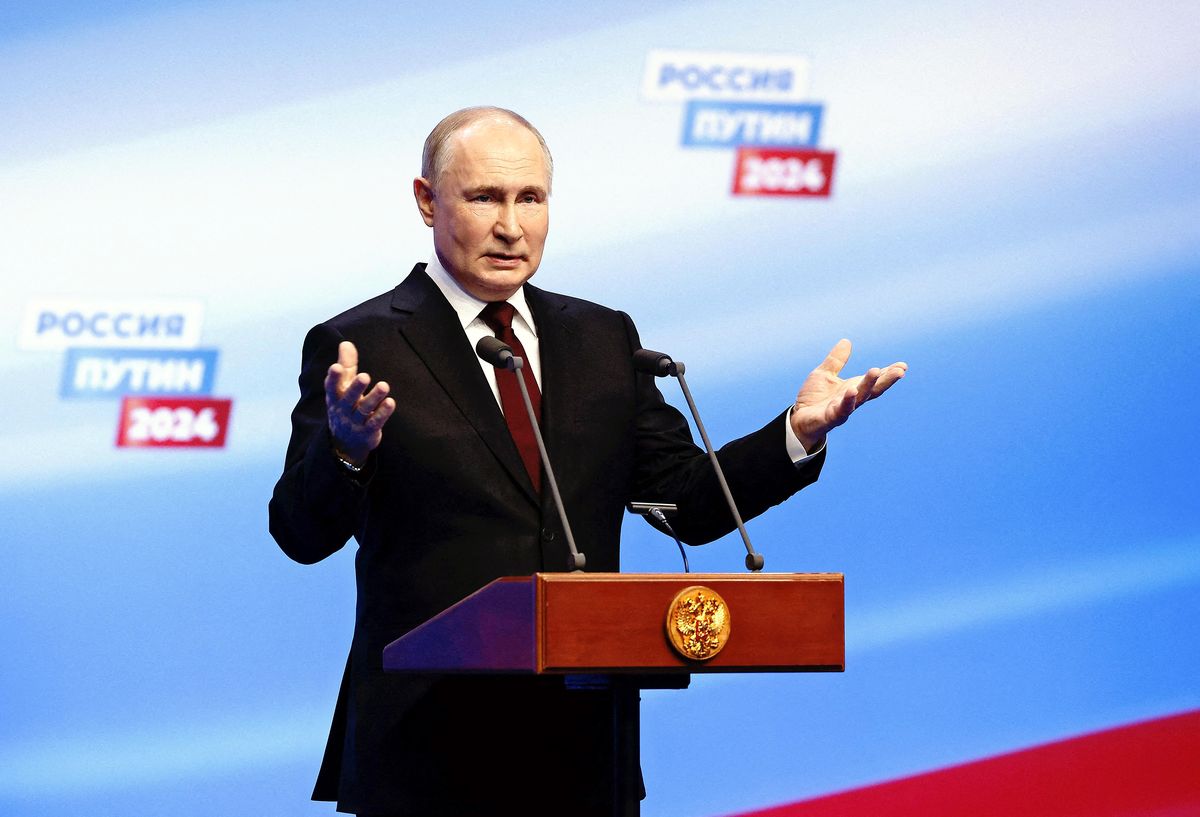
The Incumbent President Vladimir Putin won the Russian presidential election on March 17, securing his fifth term. Putin garnered 87.28% of the vote with a turnout of 77.49%, which are record highs in a presidential election in post-Soviet Russia.
A person who was critical of Russia’s aggression against Ukraine was prevented from running, thus shutting down dissenting voices, leading to Putin’s overwhelming victory. None of the three candidates running against Putin in the election opposed Russia’s aggression.
Putin was elected president of Russia for the first time in 2000, meaning he has reigned as Russia’s leader for almost a quarter of a century. This includes his time as prime minister, when he effectively remained in power. He will serve a six-year term, and due to a constitutional amendment made in 2020, he can run for reelection in the next race in 2030.
9. Sweden joins NATO
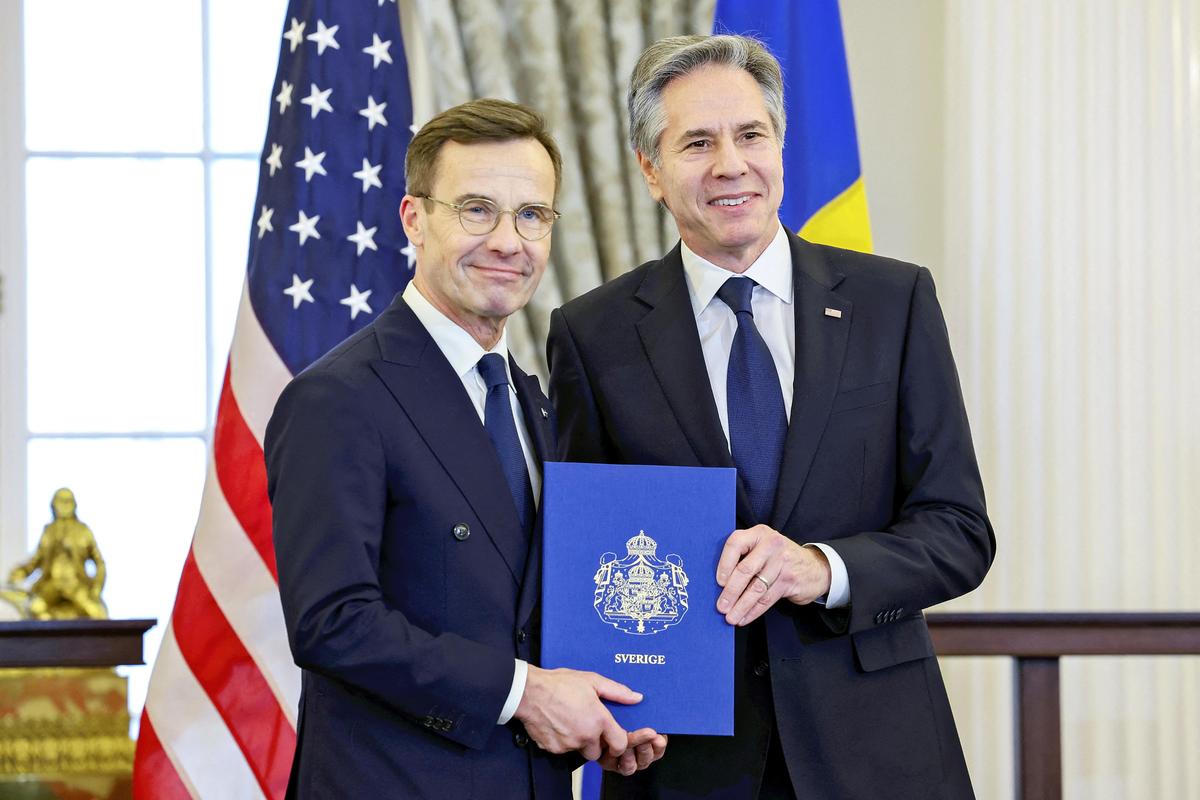
U.S. Secretary of State Antony Blinken, right, accepts Sweden’s instruments of accession from Swedish Prime Minister Ulf Kristersson for its entry into NATO in Washington on March 7.
The Nordic nation of Sweden joined NATO (the North Atlantic Treaty Organization), ending its 200 years of military nonalignment. Following Russia’s invasion of Ukraine, Sweden applied for NATO membership in May 2022.
Consensus among all NATO members is required for new admissions. Although the Turkish parliament was reluctant to agree to Sweden’s membership, the parliament approved the country’s bid on Jan. 23, 2024. The parliament of Hungary, the last country to ratify Sweden’s NATO membership, followed suit on Feb. 26. With their approval, Sweden became the 32nd NATO member on March 7. As the neighboring country of Finland joined NATO in April 2023, the alliance expanded into the wider Nordic region.
10. Ukrainian forces make cross-border attack on Russia
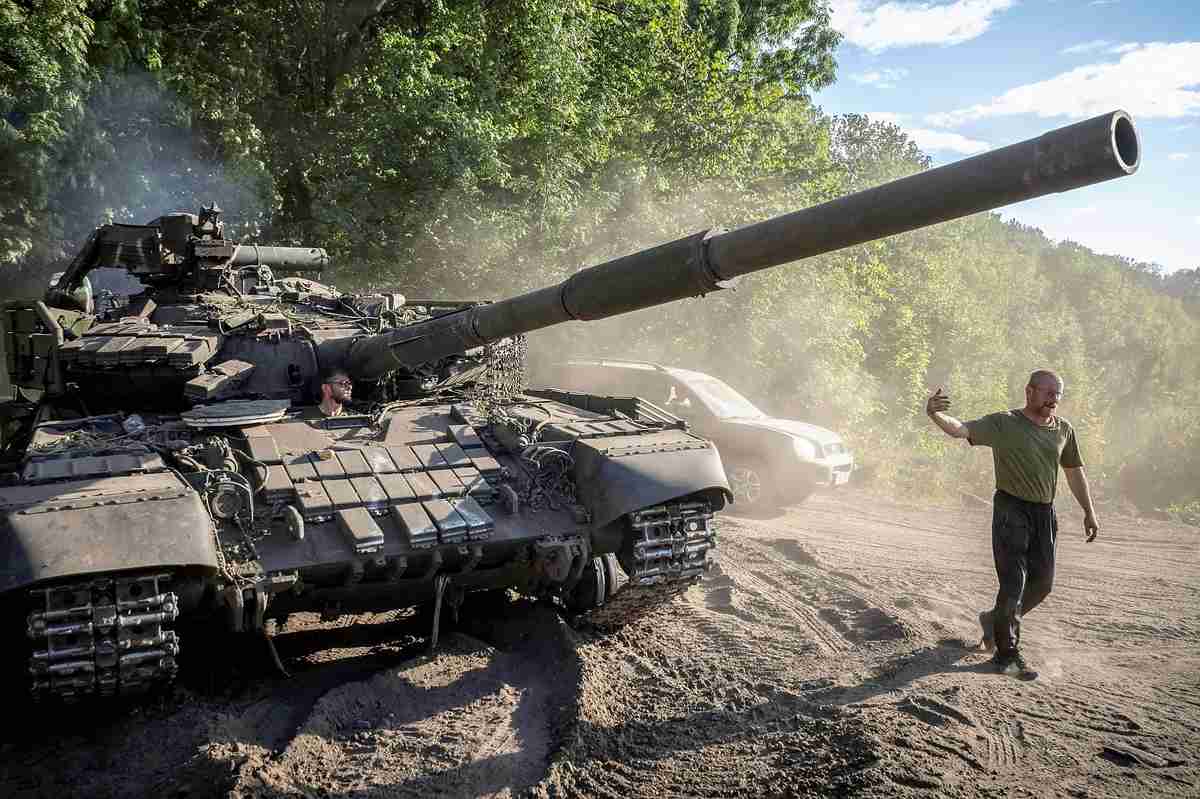
A Ukrainian serviceman operates a tank near the Russian border in Sumy region, Ukraine, on Aug. 15.
Ukrainian ground forces conducted a cross-border attack on Aug. 6 in the Kursk region of western Russia, which borders Ukraine. It is believed that the attack was intended to disperse Russian troops and secure part of Russia’s territory as a bargaining chip in future ceasefire negotiations.
Some believed that at one point the Ukrainian forces had occupied a maximum of over 1,300 square kilometers of territory. However, Reuters quoted a source in Ukraine’s General Staff in November saying that about 40% of the territory Ukraine captured had been taken back by Russian forces.
***
Extra. S. Korea declares martial law, backs down after 6 hours
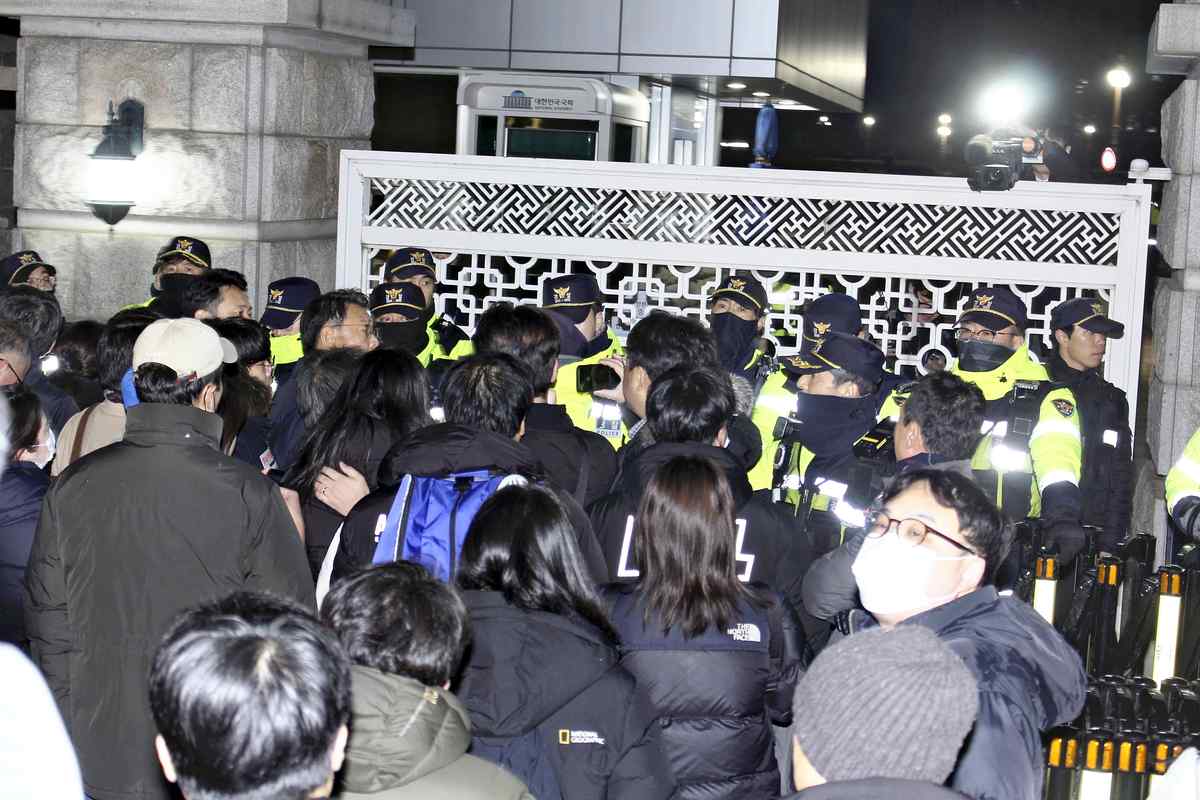
Citizens confront the police in front of the parliament in Seoul in the early hours of Dec. 4.
South Korean President Yoon Suk Yeol declared emergency martial law on the night of Dec. 3. The type of martial law that was declared bans political parties’ activities and restricts freedom of the press and other actions. Yoon argued the opposition had repeatedly filed impeachment motions against senior government officials. It was the first time emergency martial law was declared in South Korea since 1979, 45 years ago.
The South Korean parliament passed a resolution demanding martial law be lifted in the early hours of Dec. 4. Yoon lifted it about six hours after his declaration. A full-blown clash between protesting citizens and martial law forces deployed at the parliament building was avoided. However, his authoritarian attempt was heavily criticized.
Opposition parties submitted an impeachment motion against Yoon to the National Assembly. The motion failed on Dec. 7 as many of the conservative ruling People Power Party lawmakers walked out. On Dec. 14, the second impeachment motion passed after some ruling party members voted in favor.
Yoon is the third South Korean president impeached while in office after Roh Moo-hyun and Park Guen-hye, and was suspended from official presidential duties.
Syria’s Assad regime falls
Syrian President Bashar al-Assad’s regime fell on Dec. 8, after opposition forces launched a massive offensive on Nov. 27 and seized the capital Damascus. Assad fled to Russia, a country that has supported the regime.
The regime suppressed anti-Assad protests that began in 2011 as a spillover of the Arab Spring, a pro-democracy movement in the Middle East, leading to a civil war. The regime had military superiority due to the support of Russia and Iran, but this support declined due to Russia continuing its aggression against Ukraine, Iran being attacked by Israel, and Hezbollah in Lebanon losing fighting capacity. This allowed Syrian rebel fighters to advance with almost no resistance from the regime’s troops.
"Society" POPULAR ARTICLE
-

M4.9 Earthquake Hits Tokyo, Neighboring Prefectures
-

Israeli Tourists Refused Accommodation at Hotel in Japan’s Nagano Pref., Prompting Protest by Israeli Embassy and Probe by Prefecture
-

M7.5 Earthquake Hits Northern Japan; Tsunami Waves Observed in Hokkaido, Aomori and Iwate Prefectures
-

Tsukiji Market Urges Tourists to Avoid Visiting in Year-End
-

High School in Kyoto Says Students Shoplifted during Recent School Trip to Bali, Indonesia
JN ACCESS RANKING
-

Tokyo Economic Security Forum to Hold Inaugural Meeting Amid Tense Global Environment
-

Keidanren Chairman Yoshinobu Tsutsui Visits Kashiwazaki-Kariwa Nuclear Power Plant; Inspects New Emergency Safety System
-

Imports of Rare Earths from China Facing Delays, May Be Caused by Deterioration of Japan-China Relations
-

University of Tokyo Professor Discusses Japanese Economic Security in Interview Ahead of Forum
-

Japan Pulls out of Vietnam Nuclear Project, Complicating Hanoi’s Power Plans























